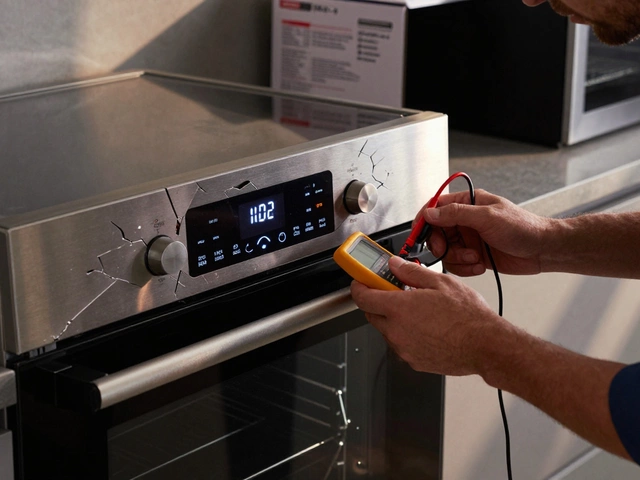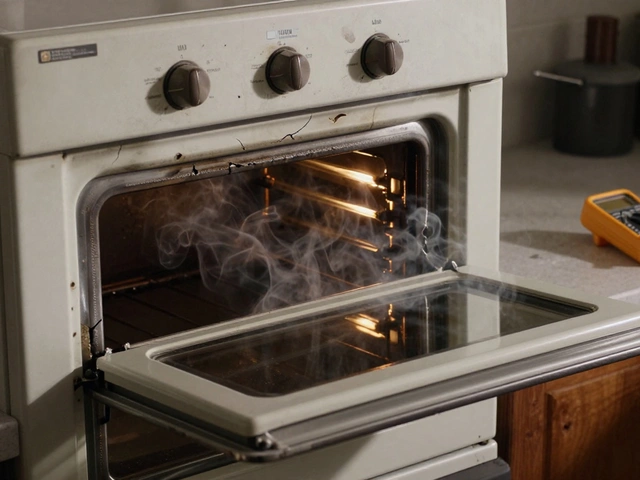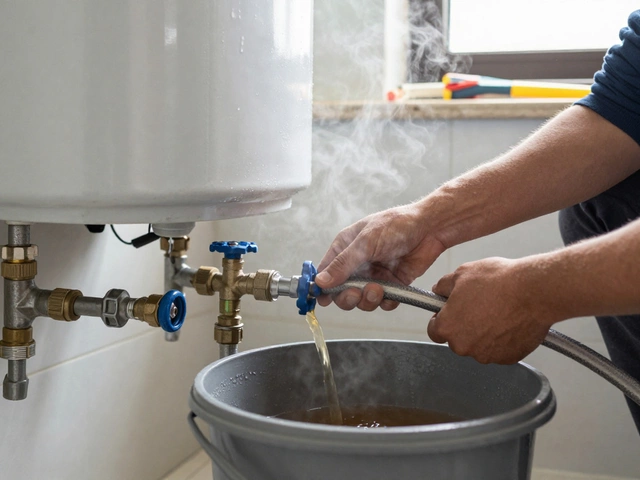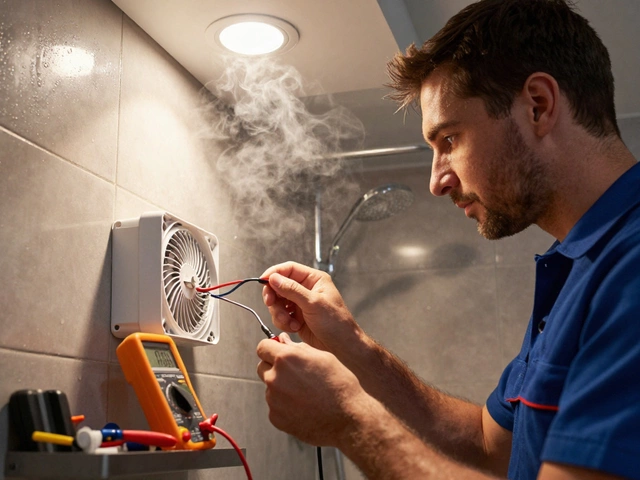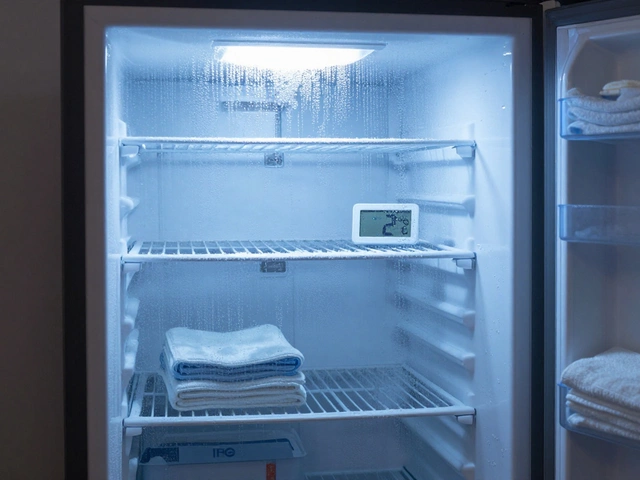Staring at your not-so-young oven and wondering if it's even worth saving? You’re not alone. If your electric oven just turned 15, it’s basically eligible for a driver’s license in appliance years. At this age, the big question is: fix it or ditch it?
First things first—most electric ovens tap out somewhere between 13 to 17 years, depending on the brand, how often you bake, and a little bit of luck. That means if you’re sitting on 15 years, you’re pretty much on borrowed time. But hey, lots of folks have coaxed a few bonus years out of their trusty stove with a good fix. It all comes down to what’s wrong, what repairs cost, and how much you depend on that oven for your dinner routine.
Before calling anyone, try a few quick things. Check if it’s just a blown fuse, a loose wire, or a wonky thermostat. Sometimes, a $30 heating element swap can solve the whole mystery—no need to empty your wallet on a brand-new oven. A surprising number of ovens die because of tiny parts, not because the whole thing is truly broken.
- What Happens to Ovens After 15 Years?
- Repair Costs vs Replacement
- DIY Fixes and Smart Checks
- When to Walk Away and Buy New
What Happens to Ovens After 15 Years?
Once an electric oven hits the 15-year mark, you can expect a bunch of annoying quirks to show up. The most common things you'll notice are longer preheat times, uneven heating, or weird noises you probably haven’t heard before. The heating element—the part that actually gets hot—usually takes the biggest hit after all those years of roast chickens and late-night pizzas.
Another big issue? Electronic controls start acting up. Touchpads might get unresponsive or show error codes at random. The thermostat that controls the temperature can lose its accuracy, messing with your baking results. A door that won’t seal properly is another sign your oven's showing its age, which can make your energy bill creep up over time.
Here's a quick look at what typically wears out on an older oven:
- Heating element: Can burn out, causing uneven or no heat
- Thermostat: Starts giving wrong temperature or shuts off too soon
- Control board: Buttons fail, display flickers, or constant beeping
- Door gasket: Worn or torn, letting heat escape
- Wiring and connections: Get loose or corroded after years of heat
If you’re curious about how your oven compares to the average, check this out:
| Oven Part | Expected Lifespan (Years) |
|---|---|
| Heating Element | 10-15 |
| Thermostat | 10-14 |
| Control Panel | 8-12 |
| Door Gasket | 5-10 |
Basically, most key parts in a 15 year old oven are pushing past or close to their limits. This doesn’t mean your oven is useless, but it’s not unusual if new problems keep popping up.
Repair Costs vs Replacement
One thing to figure out with a repair old oven is that repairs quickly add up, especially if you call the pros. For a 15-year-old oven, the average repair bill lands between $150 and $400, depending on whether it’s the heating element, thermostat, or electronic controls. Here’s the deal: if you’re quoted repair costs that are half or more of the price of a new oven, most experts will tell you to look toward replacement. New basic electric ovens start around $400 and shoot up fast if you want fancy features or smart options.
Let’s do some math. Say you’re facing a $300 repair on an oven worth about $500 brand new. That repair is 60% of a replacement; it doesn’t always make sense to sink that money in, especially knowing more issues might pop up soon. If it’s a $50 fix? Way easier to justify. Below is a quick comparison between common repair costs and the price of a new oven:
| Repair/Replacement | Cost Range (USD) |
|---|---|
| Heating Element Replacement | $100 - $300 |
| Thermostat or Control Board | $150 - $400 |
| Door Gasket | $40 - $100 |
| Brand New Basic Electric Oven | $400 - $600 |
| High-End Electric Oven | $1200+ |
Don’t forget to factor in hidden costs with repairs. Sometimes, you pay for a service call ($60-$100), and then find out you need extra parts, which sends costs higher. On the flip side, replacing means you’ll get a shiny, warranty-backed oven, and most stores haul away your old one for free.
The bottom line: if your oven needs a couple of small, cheap fixes, go for the repair. If the repairs add up to almost the cost of a new appliance or you’re scheduling another visit every few months, it’s time to consider jumping ship. Also, energy use matters—a electric oven from 2009 probably eats up a lot more electricity than today’s models. Newer ovens can save you $20-$30 a year on your bill, which adds up.

DIY Fixes and Smart Checks
Before you start stressing about paying for a professional, some quick DIY checks could solve your repair old oven issue in minutes. Stuff like this happens all the time: the oven won’t heat up, or maybe the clock went blank. Sounds bad, but half the time it isn’t a big deal.
- Power check first: Make sure the oven’s plugged in and the circuit breaker hasn’t tripped. It happens more than you’d think, especially after a big meal or cleaning spree.
- Look at the heating element: If your electric oven isn’t warming up, pop off the lower panel and peek at the heating coil. If you see cracks, bulges, or burnt spots, that’s probably your problem. Replacement coils cost $20-60 and are as easy to swap as screwing in a light bulb.
- Door switch trouble: Your oven might refuse to start if the door switch is busted. It’s a cheap part (under $30) and, if you’re handy, can be replaced at home with a screwdriver and a YouTube video.
- Temperature sensor: If your cookies come out burned but the temp says normal, the sensor could be shot. A new sensor runs $20-40, and there are tons of guides online covering how to put one in.
Sometimes, it’s not a part at all. A deep clean—especially around the sensors and fan—can bring the oven back to life. Don’t forget to wipe down the oven door glass and clear out crumbs near the bottom, because gunk buildup can even block heat flow and mess with safety features.
| Common DIY Fix | Cost (USD) | Time Required |
|---|---|---|
| Heating Element | 20 - 60 | 15-30 min |
| Door Switch | 15 - 30 | 10-20 min |
| Temperature Sensor | 20 - 40 | 20-30 min |
| Thermal Fuse | 10 - 30 | 15-25 min |
None of these fixes need you to be techy—just patient. If you’re able to handle a screwdriver and follow step-by-step instructions, you’ll save a good chunk of cash. Just remember, don’t mess with the wiring if you’re not sure what you’re touching. Turn off the power first, always.
When you’re hunting for replacement parts, use your oven’s model number. This avoids getting stuck with something that doesn’t fit, which is a classic headache. And if these checks don’t do the trick, then it’s probably time to weigh real oven repair tips from a pro—or think about a new oven altogether.
When to Walk Away and Buy New
Sometimes, fixing your old oven just doesn’t make sense. If you get a repair quote that’s more than half the price of a modern oven, that’s a huge red flag. Appliance experts say that once repair costs hit 50% or more of the cost to replace, it’s usually smarter to buy new. Also, ovens this old often need several fixes in a row, so it’s rarely just one-and-done.
- Repair old oven parts like the control board or door seal can be hard to find for models this old. If a local repair shop tells you the part is discontinued, don’t waste more time hunting on eBay or random appliance forums. Odds are, you’ll run into the same problem again soon as more parts wear out.
- Electric oven lifespan isn’t just about parts breaking. Old ovens use more energy, so you’ll notice higher power bills. ENERGY STAR says today’s ovens use up to 20% less electricity than models from 15 years ago. That means swapping out your old model can save you money in the long run, especially if you cook a lot.
- If you see signs like rusting metal inside, the control panel keeps glitching, or the oven takes forever to heat up—even after a fix—those are all signs it’s nearing the end. Modern ovens come with safety upgrades too, like auto shut-off and better insulation. If safety is a worry, that’s an easy decision: time to upgrade.
| Oven Age (Years) | Typical Problems | Likelihood of New Repairs (%) |
|---|---|---|
| 10 | Bake element, thermostat | 30 |
| 15 | Control board, door seal, uneven heat | 60 |
| 18+ | Multiple issues, poor insulation | 80 |
One more thing: think about warranties. New ovens usually come with one- to five-year coverage. With a 15-year-old oven, any money you put into a repair doesn’t cover the next thing that breaks. If your oven is more hassle than help, and costs keep stacking up, it’s probably time to say goodbye and shop for something reliable. Your fix or replace oven decision comes down to stress, money, and peace of mind for meal time.




